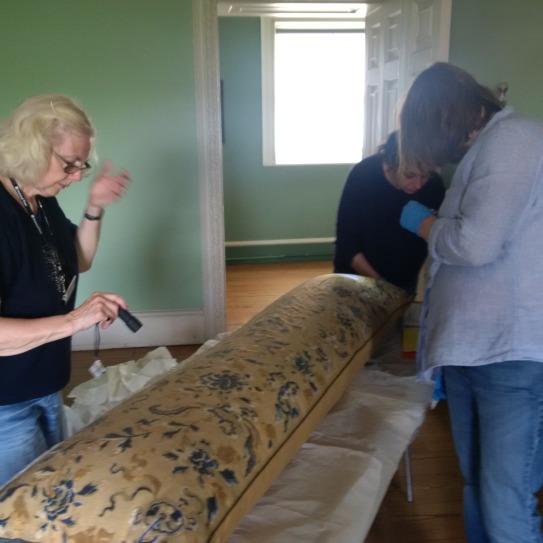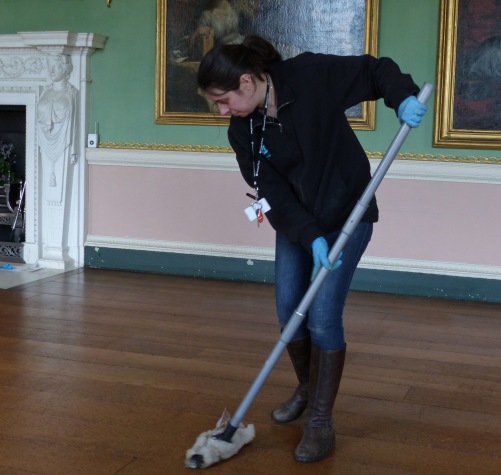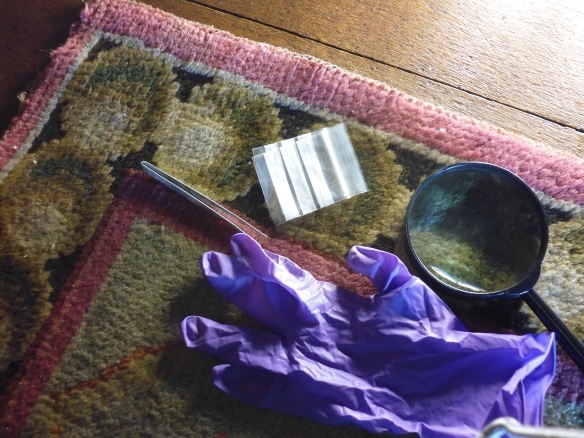One of the most important things we do here at Osterley is regular checking of our historic collections. This is a daily routine for the house team here at Osterley; this allows us to keep an eye on any developing changes that may happen to an object over time.
Recently the House team at Osterley started doing regular checks of spaces that they knew had high humidity. Because of the change in weather, the house team noticed that it was having an huge effect on the temperature and RH inside the house. Particularly on our top floor.
On one of these routine checks, they unfortunately discovered that some of our prints and etchings have been going through a few ‘organic changes’ to say the least. To clarify, the prints and etchings had started to grow mold.
image of mould formed on historic print. (Photo: Lisa Oxborough)
Mold is highly damaging for materials such as paper, this is because it is also made from a natural/organic material. Mold can root itself within the material, and will slowly grow across it breaking it down. This will eventually lead to the paper decaying and breaking apart. Other materials such as Woodwork, Textiles Taxidermy are also highly sensitive to mold growth.
It was quickly established by the House team and specialist conservators that with the weather being as warm as it has been, and with a long standing issue of the prints being fixed tight against an outside wall, resulting in restricted air flow around them. Subsequently leading to the back of the frames becoming damp and trapping moisture, creating the perfect environment known as a ‘ micro- climate’ to develop.
In total seven prints had to have conservation work performed on them.
The House team then organized for a specialist paper conservator to come and work on the prints and their frames. She was able to explain her methodology…
image of paper conservation in action. (Photo: Lisa Oxborough)
- Carefully opening of the print frames, this is to assess the damage done. it is also important to point out that some of the prints had never been out of their original frames.
- She physically removed mold debris from paper surface, by gently submerging the prints in water, and removing smaller bits with a sponge or acid free wool blotted with water.
- She then checks conservation materials and frame assembly of the frames. She did this by adjusting some of the frames, check frame fittings, and methods that the prints were hanging on the wall. This was for ventilation and to prevent the mold from returning.
Finally, the House team were able to put the prints back on the wall, where they are now back on display in pride of place.
Osterley House team putting the prints back on the wall. (Photo: Lisa Oxborough)




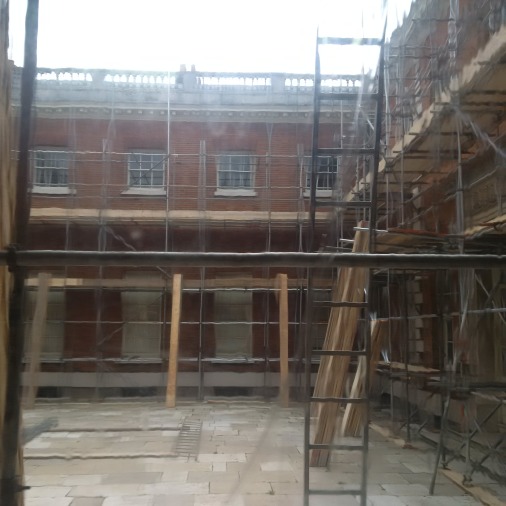
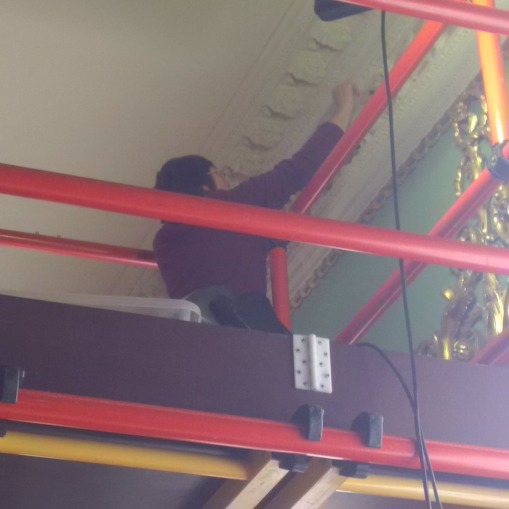
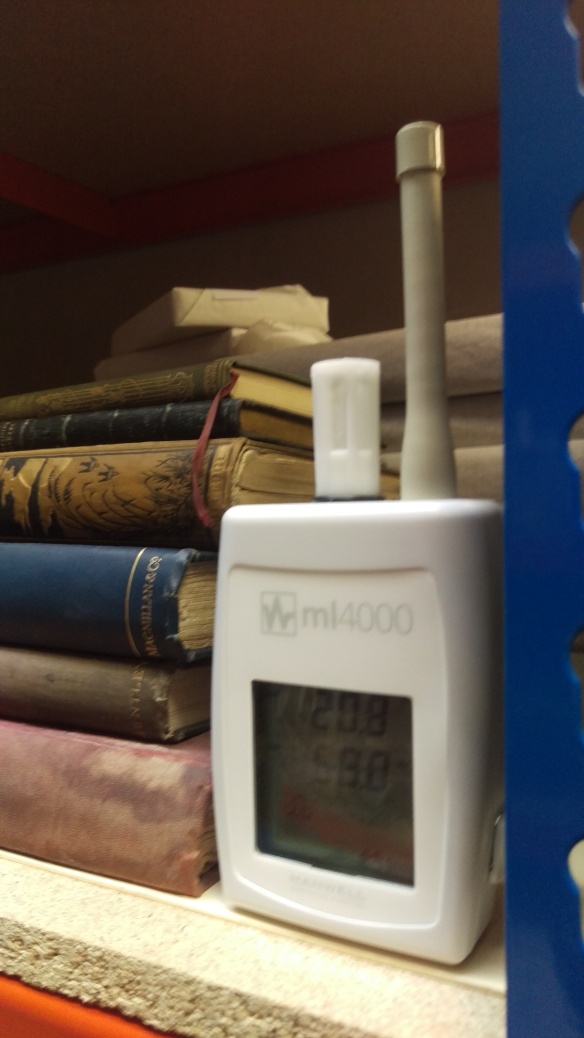 Our regular ‘Hanwell’ environmental monitors. This one is in a storage space and is showing an RH reading of 58%, right where we want it.
Our regular ‘Hanwell’ environmental monitors. This one is in a storage space and is showing an RH reading of 58%, right where we want it.  RH in some rooms sometimes reaches worryingly high levels. It’s essential to keep…
RH in some rooms sometimes reaches worryingly high levels. It’s essential to keep…